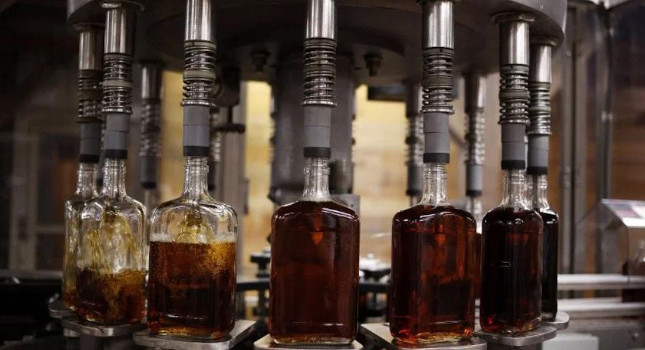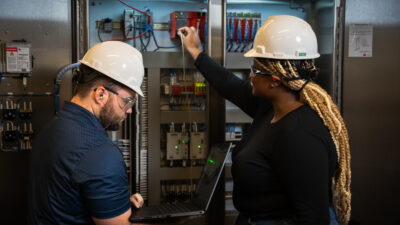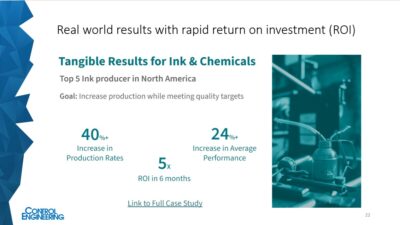System integrator gives advice on complying with Class 1, Division 1 as well as how to work with bourbon distillers in Kentucky.

The bourbon trail is alive and doing well in Kentucky (see Figure 1). According to a report published by FMI Corp. based in North Carolina, construction in the Lexington and Louisville markets is expected to peak at $14.3 billion per year in 2021. The report includes manufacturing and warehouse construction. As engineering, procurement and construction (EPC) firms and system integrators, we have a responsibility to the distillers and the people of Kentucky to design and commission new or upgraded facilities not only to the latest technology but adhering to the safety standards set forth by government bodies and self-governing councils.
Distilled spirits council of the U.S.
Since the 1960s, bourbon has been recognized by the U.S. government as “a distinctive product of the U.S.A.” Kentucky distillers have collaborated under trade associations such as the Kentucky Distillers’ Association and Presidents’ forum. They adhere to a standard set by a council higher than mandated by law or regulation known as the Distilled Spirits Council of the United States (DISCUS). This organization was founded in 1934 and its members hold themselves to a higher standard mandated by law and have more than 40 provisions in place regarding responsible beverage alcohol advertising and marketing materials.
Area classification: processing
From an engineering or system integrator perspective, there are some distinctive differences in the classification important to note when designing and installing controls and instrumentation. Figure 2 shows an insert from the DISCUS Code of Responsible Practices manual detailing the area classifications of an indoor tank process housing alcohol.
Area classification is required by government bodies such as the Occupational Safety and Health Administration (OSHA). From Figure 2, Class 1, Division 1 area is defined by DISCUS as within a 5-foot radius of any opening on a tank. Class 1, Division 1 is defined as an area where ignitable flammable gases such as liquids or vapors can exist anytime under normal operating conditions and incorporates the combination of Zone 0 and Zone 1 areas.
Figure 2 does not show any manways. It is important to point out the Class 1, Division 1 would begin at the top of the manway, not the at the surface of the tank. Any conduit entries into this classified area must have seals poured to prevent ignitable vapors introduced into the conduit. Keep in mind when scheduling inspections to not pour seals prior to the inspection. If seals are poured, the conduit will not pass inspection. If there is any doubt about classification in a closed room with tanks full of alcohol, specify all instrumentation within the room as Class 1, Division 1.
Other notable points include:
- All containment trenches or drains are classified as Class 1, Division 1.
- Tanks must be vented to the atmosphere with a flame arrestor.
- All instrumentation within the 5-foot area must be Class 1, Division 1.
- Always err on the side of caution with tank rooms; specify Class 1, Division 1 instrumentation and lighting.
Area classification: packaging
Switching the focus from the classification of the processing or delivery side to the packaging side, Figure 3 illustrates the classification around a filler. This same theory can be applied to a rinser or capper.
Some original equipment manufacturers (OEMs) offer tri-blocks, treating the rinser, filler and capper as one machine. The principles still apply. In an area where vapors or liquid will exist under normal operating condition such as a filler the area 3 feet from the edge of the filling is considered Class 1, Division 1. To further clarify, the classification starts where any filling would take place. This includes any valves involved in the filling process.
The approach some OEMs are taking or recommending is to enclose the filler or tri-block and add ventilation. This approach eliminates any confusion of where the classified area starts. From a design perspective, duct work, exhaust fan and power must be added to the facility design.
In the event the distiller is relocating a piece of equipment to a new location or bottling hall, it would fall upon the EPC and the system integrator to enclose and ventilate the relocated piece of equipment. The distiller would typically not attempt to do this in-house, but it’s not unheard of. In either scenario, the equipment would need to be inspected and pass inspection before operating.
Area classification: delivery
We have talked about delivery or process side and packaging. Let’s visit the equipment involved in delivering the product from the process area (tanks) to the packaging area, filler. The valving to deliver the product must be Class 1 Division 1 in the event it leaked or failed. This would fall in the 3-foot area as shown in Figure 3 of the filler. It would not fall into the 5-foot rule as shown on the tank because it is considered the filling side of the process.
It is recommended to place these devices near the packaging equipment. If these devices are near the tank, it is recommended to place these devices on the tank or a mezzanine near the tank for ease of access. This could be a critical part of commissioning the equipment on time and could derail the project. These approaches will make it easier to maintain the equipment once in the operating phase.
Passing electrical inspection
Once everything has been designed and installed according to the DISCUS area classification, the equipment will need to pass electrical inspections. The key to passing inspection is correct area classification drawings. This may seem obvious to some but very critical to delivering the project on time and under budget. The area classification drawings must be clear in defining the 3- or 5-foot rule based on the equipment shown in Figures 2 and 3. If there is something out of alignment or does not match, the inspection will fail.
The state of Kentucky does not require electrical panel drawings to be stamped by a professional engineer. However, the state does require all panels to be UL approved. This is an important part of passing the electrical inspections. Most inspectors will require 24-hour notice before scheduling a visit. Depending on the activity in the area, this could cause at least a 24-hour delay and possibly more.
Once the inspector has passed a machine or tank area, then seals can be poured in that area. In the interest of saving project time, inspections can be done in stages. The watch out there is scheduling the inspector for multiple site visits and working around the inspector’s schedule versus having the inspector scheduled once. Depending on the size of the project, this could play a major part of delivering a system on time.
Jedson Engineering is a certified member of the Control System Integrators Association (CSIA).



